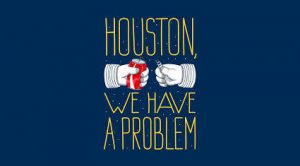 So you found a problem in your promo product order when it arrived.
So you found a problem in your promo product order when it arrived.
DEFINITELY NOT A GOOD THING!
I can personally GUARANTEE that this is NEVER the planned finish to any project we work on.
But, here we are. What next? Can’t sit and cry in our Rice Krispies … we need to act and act fast. This is the key to getting a fix in place and underway.
Most errors occur in the manufacturing process (curse you machines!)…outside of your or our watchful gaze. And if your shipment had come to our receiving dock, instead of yours, we would be feeling exactly the SAME as you … surprised, upset and thoroughly unsatisfied. But how to focus our reaction?
It is all about DETAILS. When you can contact the Supplier and accurately relay the problem, this can get things in motion very quickly. From our side of the fence we are most concerned about the following list of details to fully come to grips with the situation:
- What is the exact nature of the problem discovered?
We need to know specifically what happened so we can focus our reaction immediately onto the relevant party to get the situation corrected pronto. Your accurate telling to us of what is wrong points us in the right direction. Bad imprint vs. wrong imprint vs. broken product vs. another factor gets us directly onto the best trail to correction.
- How rampant is the problem?
The issue uncovered might be universal or only on some pieces of your order. We need to know how deep the “damage” runs. That is why I talked in PART 1 about taking a random sampling across your order to help find the impact of the problem. Machines (often like their human operators) can have bad moments of “attention deficit” to what they are doing and things can deviate. That was often the reasoning behind why manufacturers shipped OVERS in final quantity – to make up for any units that might have suffered a momentary slip in quality/accuracy.
- Is this an irritating inconvenience or the impending end of the world?
Truth is we need to prioritize our response. If it is simply a bill adjustment to credit damaged or unacceptable items; that is different than requiring a total immediate re-run of the job. Uncovering the depth of the problem above often helps answer this question for you – especially if you happen to have extra OVERS units.
- How much time do we have to correct this problem?
It is always about time. What we are able to do in response is very much based on how much time we have to do it in. Don’t get me wrong – needing something in a week versus tomorrow for an event is EQUALLY important in our way of thinking. We just need to be clear when we go to the manufacturer so we can properly consider our best options to fix the situation.
- Can you email us some photo samples of the problem?
This is NOT about trust. This is really about fully understanding the nature of the problem. And YES….”a picture IS (often) worth a 1,000 words.” If you can do this – please do. It is such a HUGE help to keeping things speeding along.
- Can we agree on a time frame for us to get organized, energized and respond?
Once we have all of the facts, we will need a little bit of time to double-check job details and contact the manufacturer to get a huddle happening on the situation. Having a “rally” time to come back together is always a good practice…even if it is simply to report that things are being worked on and to get a new response point agreed upon. (REMEMBER: not all manufacturer’s are based in the Eastern Time Zone [which is where we are] or maybe even the North American continent. And this is only one potential element that plays into how fast we can present the problem, discuss solutions and formulate a workable plan.)
THE BOTTOM LINE:
Solid and proactive sharing of the information above helps us plan our next steps to produce a response to the situation. We can now go to the appropriate parties and get them involved in the solution process from a position of certainty and clarity. Much valuable time can be lost as manufacturers and customers end up playing 20 QUESTIONS back and forth through a supplier to try and understand what has happened and how bad it is. And that often makes a bad situation worse.
We WANT to solve this problem. We WANT to see you happy. Working together like this only enhances our chances of being able to make it right…right away!

